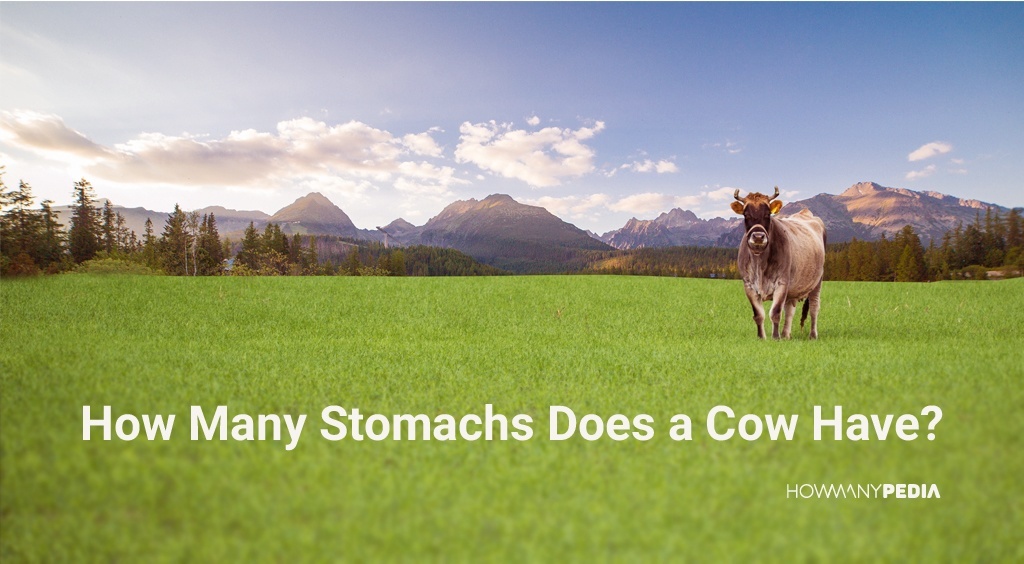How Many Stomachs Does a Cow Have
How many stomachs does a cow have? Like humans, a cow only has one stomach. However, the stomach it has is highly specialized and has 4 different compartments, to help it to be able to process its food in a different way to us. This is where the idea that cows have more than one stomach came from, which is false.
How Many Stomachs Does a Cow Have
Although cows only have one stomach, it’s not a stomach in the same sense as your own. A cow’s stomach is perfectly adapted to their diet, in order for them to be able to eat and absorb the nutrients from their food.
A cow lives on a diet that is strictly vegetarian, so they eat a variety of grains and grasses, which helps them grow up to be healthy cows.
However, high-fiber diets are not easy to digest. For instance, if a person eats too much fiber, they may have problems with their intestines, and have pain and bloating.
A cow is similar in this regard and that is the reason why a cow’s stomach evolved the way that it did. There are actually four chambers in their stomachs that the food must pass through.
It’s very important that the food passes through all the sections, or a cow would not be able to digest its food properly.
How Many Stomachs Does a Cow Have Infographic (click to enlarge.)

Copy This Code & Share This Infographic On Your Site
Additionally, each part of the cow’s stomach does a certain job. The first part is called the rumen. The rumen is responsible for helping to break down the food into smaller pieces, especially things like grass. It’s also the largest part of the stomach.
The reticulum is the next part and is responsible for breaking down food that is even harder to digest. If a substance is too hard for the reticulum to digest, a cow may throw it up again, in order to chew it more, so it may be passed through again; this is referred to as chewing the cud.
The third section is called the omasum, which does the job of helping the cow absorb all the vitamins and minerals in its food. This is also the place where it takes the water it needs out of what it has eaten.
The fourth and final part is called the abomasums and is the site of further digestion. This is the part of the stomach that does the same job our stomachs do. This part also uses rennet to break down the food, which is an essential ingredient in cheese.
Even though a cow has this unique body part doesn’t mean it works perfectly for them. Cows still have a problems digesting their food – you may have heard that cows contribute to global warming.
This is due to the methane they pass whenever they are digesting their food. In fact, the main reason they have so much of a problem eating is because the foods they eat are generally considered to be low quality compared to what their wild ancestors would have eaten.
The problem is that cows are so large and they eat many times a day, so it’s not easy to give them a better food source; it wouldn’t be cost-effective for farmers. Also, the average cow will graze all day and eat hay, different types of grasses and wildflowers, and seems perfectly happy to do so.
Cow Farming

Cow farming, or cattle farming, has been around for many years; so many years that science is not sure exactly how many, but they know it is at least 10 thousand.
Farming as a whole is a complicated process, but cow farming is even more so because the animals need a lot of space to move around and eat.
Also, depending on the reason they are being raised, a farm may have to have a lot of different machinery and costs.
Cows are farmed throughout the world for a number of reasons. The most important reason is for the purposes of milk.
Milk is a drink that you’ll obviously be familiar with; you put it on your cereal or in your coffee. Without the work done across the world on dairy farms, there would be no milk to drink from cows.

A dairy farm is a farm where cows are raised for milking purposes. They can be milked by hand on a small farm, but on larger farms, they are usually milked throughout the day using high-quality stainless steel machines.
This keeps the process uniform from cow to cow and keeps all the milk collected in a central location, where it can be heated and sterilized.
Oftentimes, a farm will keep a few bulls around to impregnate the female cows, so that they can keep producing offspring. This not only ensures the future of the next generation of dairy cows, but also helps the mothers produce milk for the baby, as well as for human to drink.
This milk is taken from the cow and processed in order to make sure it has no harmful bacteria and is safe for us to consume. Milk is an important source of calcium, which is a big reason why it is produced for all of us to enjoy.
Cows are also farmed for their meat, which is how we get products like hamburgers and steaks. Since male cows are not milk producers, they are often slaughtered for meat.
Female cows that have become too old to milk are also sold for their meat. Additionally, there are many different types of cows grown especially for cultivating their meat.
These are the types of cows you may have heard about, such as the Angus, Wagyu, and Texas Longhorns. They are grown on what is sometimes called a cattle farm, where cows and bulls are fed until they’re of respectable size, and then sold by the pound at auction. They’re then taken away to be packaged as meat.
Another product we get from cows is leather. Leather is produced from the hides or skin of the cow and is used to make a variety of different items, such as shoes, belts, purses, and furniture.



